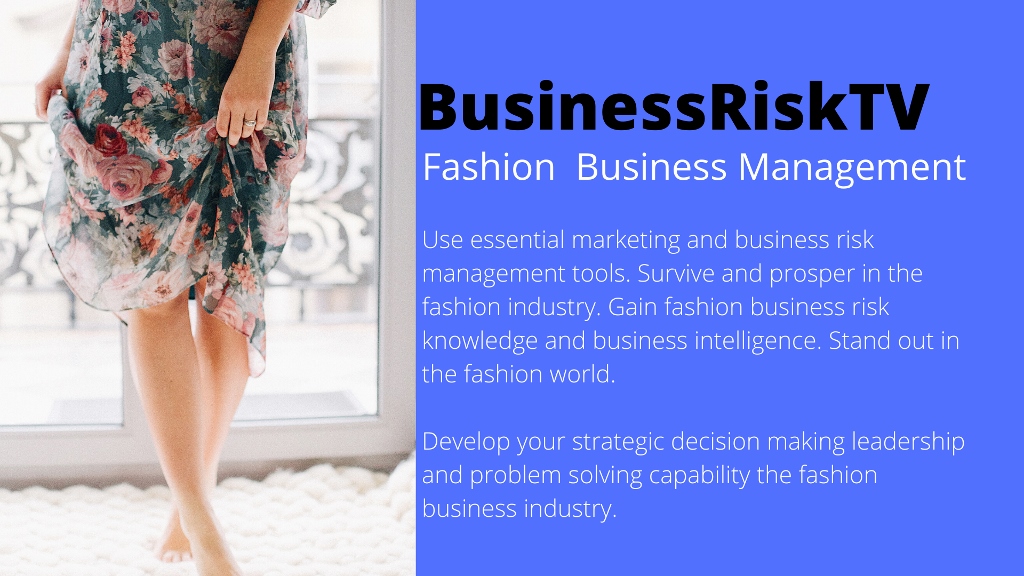Want to buy sell fashion online
Buy latest fashion best buys at best price or sell more cost-effectively online.
Enter code #FashionMembership
Fashion Online Marketplace for online clothing stores on BusinessRiskTV and sister websites enable your fashion business to sell more online. Discover the latest fashion and trends in menswear and womenswear at best prices on our online fashion marketplace platforms. Discover better ways to protect and grow your fashion business with BusinessRiskTV.
Enter code #FashionOnline
Buy sell clothes and fashion items online

Discover the latest fashion trends in womenswear and menswear at BusinessRiskTV and CheeringupInfo. Shop online for fashion brands you love at a discount. Keep your fashion style confident 4 less. Get the latest womenswear and menswear clothing fashion trends and accessories.
See what the best online and High Street retailers in UK are providing on a budget. Discover on trend fashionwear and accessories. Our Fashion Retail Partners want you to buy their fashion bargains before their competitors secure your online purchase.
Connecting fashion lovers looking for a bargain with fashion businesses in UK
Shop this seasons collection of clothes footwear accessories beauty health and fitness and more.
Finding the latest best fashion retailers have to offer can be time consuming or unfruitful. We make life and business in UK fashion easier and better.
Searching for the cheapest fashion deals in UK is free. Come back often to find the best of Fashion Online quickly. Pick up the latest lifestyle and fashion gossip news headlines opinions debate and business reviews.
Are you a business owner or manager in fashion industry? Do you want to sell more? Showcase your fashion styles business products or fashion services online more profitably.

Business leaders do not always have the fashion marketing budget to promote their fashion business. We provide a range of online marketing options for fashion businesses to fit most budgets so you can promote your fashion business products or services for longer.
Promote and market your business on BusinessRiskTV for 12 month
Put your fashion products or services in front of new people already interested in your type of business offering.

Link into your existing online sales process direct from BusinessRiskTV or CheeringupInfo or use our eCommerce soltuions to increase your sales cash flow and profit
Increase the sources of your revenue streams more sustainably. Grow your fashion business faster with BusinessRiskTV.
Alternatively click on subscribe button below to find other ways of promoting your fashion business more cost effectively.

Increase your British fashion web sales more profitably for a sustainable future for your fashion business ambitions
Promote market and advertise your fashion online more profitably. Exhibit your Fashion Online.
- Want to list your fashion related business on our online Fashion Business Directory?
- Are you running any fashion deals discounts or special offers you want more people to know about?
- Could you write an advertorial to advertise your fashion business and inform our readers?
Reach more new customers with BusinessRiskTV.

Fashion Live News Headlines Reviews Offers
Get the latest fashion live news online for free. Hear about fashion deals discounts and special offers first! Sell more fashion more profitably online with help of BusinessRiskTV.

BooHoo which owns brands like Pretty Little Thing and Nasty Gal will undertake an independent review of its UK supply chain following allegations that factories in Leicester that sell clothes to BooHoo pay workers below minimum wage in UK and failed to protect them during coronavirus pandemic.
BooHoo has also announced it will invest an initial 10 million pounds to eradicate malpractice in supply chain risk management step. BooHoo has to now rebuild its brand reputation following the allegations in its supply chain. It has promised to terminate any supply chain relationship where noncompliance with its code of conduct is found.
BooHoo has found like companies before it the cost of supply chain management impacting on its profit. Companies like Next ASOS and Amazon have removed all BooHoo clothing from sale following the allegations about BooHoos supply chain. More than a billion pounds was quickly knocked of BooHoos market value.
BusinessRiskTV Buy Sell Fashion Online Marketplace
Find out how to buy sell trade fashion online with BusinessRiskTV. By submitting the form below you agree to submit your info to BusinessRiskTV and its business partners who will contact you about buying and selling fashion more profitably online.
Shop Buy Sell Fashion Online
BusinessRiskTV Fashion Magazine
Fashion Industry Risk Management
Navigating the Changing Landscape of Fashion Industry: Managing Business Risks in the Modern Fashion World
Fashion is an ever-evolving industry that is influenced by various factors such as changing consumer preferences, technological advancements, global economic conditions, and social and cultural shifts. In today’s fast-paced fashion world, businesses face numerous risks that can impact their success and sustainability. From supply chain disruptions to changing consumer behaviors, fashion companies must be proactive in identifying, assessing, and managing risks to stay competitive and thrive in the dynamic market. In this article, we will explore the changing landscape of the fashion industry and discuss key business risks that fashion companies need to address to ensure their long-term success.
Supply Chain Disruptions:
The fashion industry heavily relies on complex global supply chains that involve multiple stages, including sourcing raw materials, manufacturing, transportation, warehousing, and distribution. Any disruption in the supply chain can have severe consequences on a fashion company’s operations and profitability. For example, natural disasters, political instability, labour disputes, and trade disputes can disrupt the flow of materials and products, leading to delays, increased costs, and production losses. To mitigate supply chain risks, fashion companies should diversify their sourcing base, have alternative suppliers, maintain adequate inventory levels, and establish robust risk assessment and monitoring processes. Embracing technologies such as blockchain and data analytics can also help enhance supply chain visibility and traceability, enabling companies to identify and address potential disruptions proactively.
Changing Consumer Behaviours:
Consumer behaviors and preferences are constantly evolving, driven by factors such as changing demographics, cultural shifts, and technological advancements. Today’s consumers are increasingly conscious about sustainability, ethics, and social responsibility, and they expect fashion brands to align with their values. Companies that fail to meet these expectations may face reputational risks and loss of customers. Fashion businesses need to keep a close eye on changing consumer behaviors and preferences and adapt their strategies accordingly. This may involve incorporating sustainable and ethical practices into their operations, using eco-friendly materials, promoting fair labor practices, and being transparent about their supply chain. Engaging with customers through social media, e-commerce platforms, and personalised marketing can also help companies understand consumer preferences and tailor their products and services accordingly.
Fast Fashion and Overconsumption:
Fast fashion, characterised by rapid production cycles and low-cost disposable garments, has gained significant popularity in recent years. However, it has also been associated with negative environmental and social impacts, including pollution, waste, and labor exploitation. The overconsumption of fast fashion has resulted in a throwaway culture, where garments are discarded after a few uses, leading to excessive waste and environmental degradation. Fashion companies need to be aware of the risks associated with fast fashion and overconsumption and adopt sustainable and responsible practices. This may include promoting slow fashion, which emphasises quality, durability, and longevity, and encourages consumers to buy less but buy better. Companies can also explore circular economy models such as renting, reselling, and recycling garments to reduce waste and extend the lifespan of their products.
Intellectual Property Infringement:
Intellectual property (IP) infringement is a significant risk in the fashion industry, where designs, trademarks, and copyrights play a crucial role in brand recognition and market positioning. Counterfeiting and copying of fashion designs and logos can result in lost sales, damage to brand reputation, and legal disputes. Fashion companies need to take proactive measures to protect their IP rights and prevent infringement. This may involve registering trademarks and copyrights, monitoring the market for counterfeit products, and taking legal action against infringers. Companies can also implement strict internal controls to ensure that their employees and partners do not engage in IP infringement knowingly or unknowingly. Collaborating with industry associations, government agencies, and law enforcement agencies can also help in detecting and prosecuting IP infringers and creating awareness about the importance of protecting IP rights in the fashion industry.
Economic and Geopolitical Risks:
The fashion industry is highly susceptible to economic and geopolitical risks that can impact consumer demand, production costs, and market access. Factors such as global economic downturns, changes in trade policies, currency fluctuations, and political instability can disrupt the fashion supply chain, affect production costs, and disrupt sales channels. For example, tariffs, trade disputes, or changes in trade agreements can result in increased costs of raw materials or finished goods, affecting the profitability of fashion companies. Fashion businesses need to closely monitor economic and geopolitical developments and have contingency plans in place to mitigate the impact of such risks. Diversifying sourcing and manufacturing locations, having alternative sales channels, and maintaining financial flexibility through effective cash flow management and risk hedging strategies can help companies navigate through economic and geopolitical uncertainties.
Technological Disruptions:
Technology is rapidly transforming the fashion industry, presenting both opportunities and risks. Automation, artificial intelligence (AI), internet of things (IoT), and other emerging technologies are changing the way fashion companies design, manufacture, market, and sell their products. While technology can enhance operational efficiency, improve customer experiences, and drive innovation, it can also disrupt traditional business models and create new risks. For example, automation and AI can replace human jobs in the manufacturing and retail sectors, leading to labor-related risks and social implications. Data breaches, cyber-attacks, and intellectual property theft are also significant risks associated with technology adoption in the fashion industry. Fashion companies need to embrace technology strategically while proactively managing the risks associated with its implementation. This may involve investing in cybersecurity measures, upskilling and reskilling employees, and developing robust data privacy and protection policies. It’s essential for fashion businesses to keep abreast of the latest technological advancements, understand their implications, and leverage them to gain a competitive edge while managing associated risks.
Brand and Reputation Risks:
Brand and reputation are critical assets for fashion companies, and any negative publicity or damage to brand image can have severe consequences on their business. Social media, online reviews, and viral campaigns can quickly spread information and opinions about fashion companies, and a negative perception can impact consumer trust and loyalty. For example, allegations of unethical labor practices, environmental violations, or insensitive marketing can result in reputational damage and boycotts by consumers. Fashion companies need to be proactive in managing their brand and reputation risks. This may involve implementing robust ethical and social responsibility policies, conducting regular audits of suppliers’ practices, being transparent in their communications, and engaging with stakeholders to build trust and credibility. Having a crisis management plan in place, with clear protocols for handling reputational issues, can also help companies respond effectively to any adverse situations and protect their brand reputation.
Regulatory Compliance Risks:
The fashion industry is subject to various regulations related to labor, environmental, health and safety, trade, and intellectual property. Non-compliance with these regulations can result in fines, penalties, legal disputes, and reputational damage. Fashion companies need to ensure that they are compliant with all applicable laws and regulations in their operating countries and markets. This may involve having a thorough understanding of the regulatory landscape, maintaining accurate and up-to-date records, conducting regular audits, and implementing effective risk management processes. Collaborating with legal and compliance experts, industry associations, and relevant government agencies can also help companies stay compliant and avoid regulatory risks.
Financial Risks:
As with any business, fashion companies face various financial risks that can impact their profitability and sustainability. Factors such as fluctuating currency exchange rates, interest rates, credit risks, and cash flow challenges can affect a company’s financial performance. For example, sudden currency devaluations can increase the cost of imports or impact export revenues, leading to reduced profit margins. Tight credit markets or high interest rates can also limit access to capital for expansion or investment in new initiatives. Poor cash flow management can lead to liquidity issues, affecting a company’s ability to meet its financial obligations or invest in growth opportunities.
Fashion companies need to have robust financial risk management strategies in place to mitigate these risks. This may involve closely monitoring currency exchange rates and interest rate trends, hedging against currency risks, diversifying sources of funding, maintaining healthy cash flow through effective working capital management, and conducting regular credit risk assessments of customers and suppliers. Developing strong relationships with financial institutions, having contingency plans for financial emergencies, and conducting regular financial audits can also help fashion companies proactively manage financial risks.
Supply Chain Risks:
The fashion industry relies on complex global supply chains involving multiple suppliers, manufacturers, and logistics partners. Any disruption in the supply chain can result in delays in production, increased costs, and loss of sales opportunities. Supply chain risks can arise from various factors such as natural disasters, transportation disruptions, labor strikes, political instability, or changes in trade policies. For example, a factory shutdown due to a labor strike or a port closure due to a natural disaster can disrupt the supply of raw materials or finished goods, affecting production schedules and delivery timelines.
Fashion companies need to assess and manage their supply chain risks proactively. This may involve diversifying suppliers and manufacturers, conducting regular risk assessments of suppliers, having contingency plans in place for alternative sourcing or transportation options, and developing strong relationships with key suppliers. Implementing supply chain visibility tools, such as blockchain technology, can also help companies track and monitor their supply chain operations in real-time, identifying potential risks and taking timely actions to mitigate them.
In conclusion, the fashion industry is a dynamic and competitive sector that faces various risks that can impact its business operations, profitability, and sustainability. Fashion companies need to proactively identify, assess, and manage these risks to protect their business and maintain a competitive edge. From geopolitical risks to supply chain disruptions, from changing consumer preferences to technological disruptions, from legal and regulatory compliance to brand reputation risks, fashion companies need to have robust risk management strategies in place to mitigate the impact of these risks.
Key steps for fashion companies to effectively manage business risks include conducting thorough risk assessments, developing risk mitigation plans, implementing robust risk management processes, maintaining strong relationships with stakeholders, monitoring market and industry trends, and having contingency plans for potential disruptions. Collaboration with experts, such as legal advisors, financial institutions, and industry associations, can also provide valuable insights and guidance in managing risks effectively.
By proactively managing risks, fashion companies can not only safeguard their business operations but also capitalise on new opportunities and stay ahead in a rapidly changing industry. A proactive approach to risk management can help fashion companies build resilience, enhance their reputation, and ensure long-term sustainability in an increasingly competitive and uncertain business environment.
#BusinessRiskTV #BuySellFashion #BuyandSellFashion #FashionMarketplaces #FashionExhibitions #FashionOnline #FashionMagazines #FashionReviews #SellMoreOnline #FashionDeals #FashionOffers #FashionDiscounts #FashionBargains #FashionMarketing #FashionBusinessDirectory
Fashion Online Marketplace BusinessRiskTV Online Fashion Marketplace

Business Risk Management Club